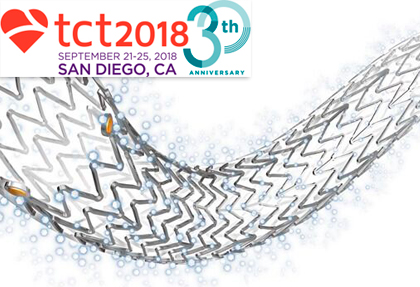Polymer-free amphilimus-eluting stents are a novel technology combining sirolimus and long-chained fatty acids. This enhances the uptake of antiproliferative agents and may be associated with lower restenosis, particularly among patients with diabetes. The new device includes abluminal reservoirs filled with the drug; in consequence, there is no need for polymer. This work compares this new device with a permanent-polymer zotarolimus-eluting stent (Resolute Integrity).
 Overall, 1491 patients were randomized 1:1 after stratification for troponin status and diabetes. Troponin-positive patients received dual antiplatelet therapy for 1 year, whereas troponin-negative patients received it for only 1 month.
Overall, 1491 patients were randomized 1:1 after stratification for troponin status and diabetes. Troponin-positive patients received dual antiplatelet therapy for 1 year, whereas troponin-negative patients received it for only 1 month.
The primary endpoint was the classic composite of cardiac death, target-vessel infarction, and target-vessel revascularization at 12 months.
The primary endpoint occurred in 5.6% of patients in the zotarolimus group vs. 6.2% of patients who received the new device. The polymer-free amphilimus-eluting stent was non-inferior as regards the primary endpoint, and no difference was observed upon the assessment of each separate component. The overall rate of definite or probable stent thrombosis was 1%.
The analysis of specific groups such as patients with diabetes did not show any significant differences either. In consequence, further studies are required to warrant a wider use of this device.
Original title: Randomized All-Comers Evaluation of a Permanent Polymer Zotarolimus-Eluting Stent Versus a Polymer-Free Amphilimus-Eluting Stent: (ReCre8) A Multicenter, Non Inferiority Trial.
Presenter: Pieter Stella.
ReCre8-trial-articulo-original
Get the latest scientific articles on interventional cardiologySubscribe to our weekly newsletter
We are interested in your opinion. Please, leave your comments, thoughts, questions, etc., below. They will be most welcome.





